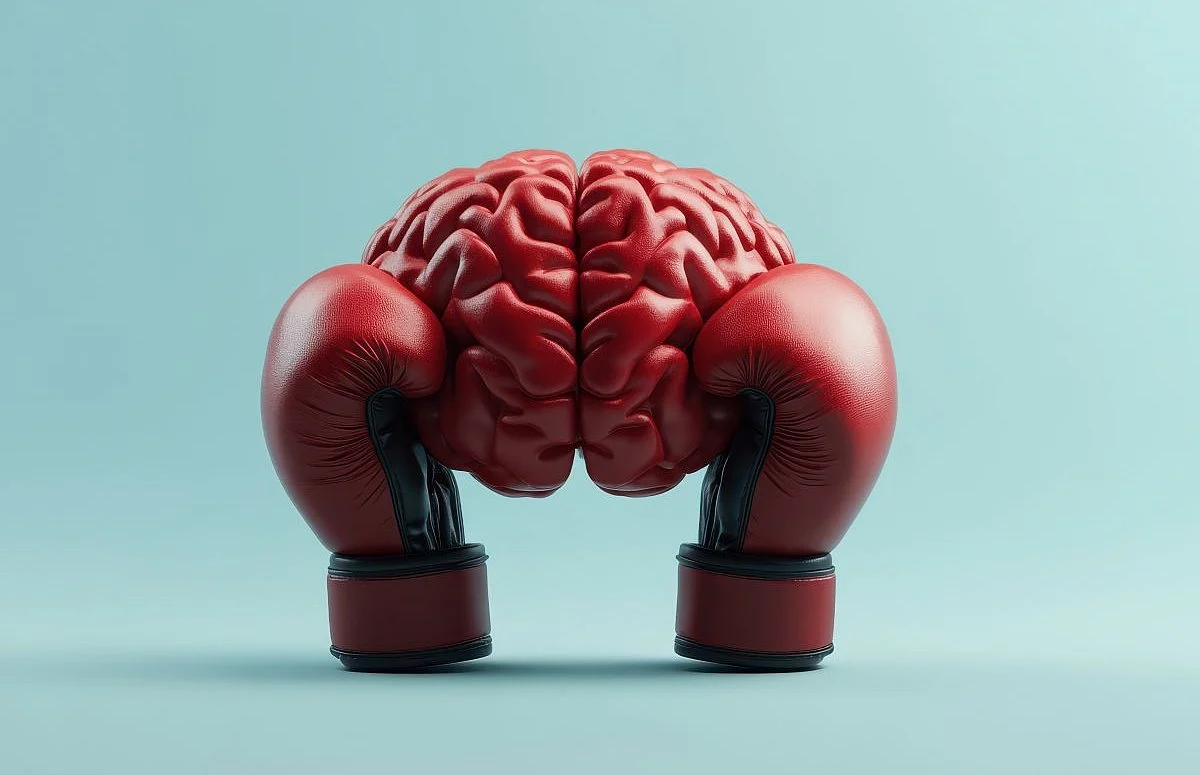Socioeconomic Deprivation Tied to Neurodegeneration in Combat Athletes
By Elana Gotkine HealthDay Reporter
THURSDAY, Aug. 14, 2025 -- Athletes experiencing early-life socioeconomic disadvantage may have an increased risk for neurodegeneration from exposure to repetitive head injury (RHI), according to a study published online Aug. 13 in Neurology.
Brooke D. Conway Kleven, P.T., Ph.D., from the NLV Sports Innovation Institute/Kirk Kerkorian School of Medicine in Las Vegas, and colleagues conducted a nested case-control study drawn from a longitudinal cohort to examine whether combat athletes with substantial exposure to RHI with a history of socioeconomic disadvantage have greater neurodegeneration than those from affluent neighborhoods. Data were obtained between 2013 and 2024; brain health was evaluated at annual visits among active and retired professional combat athletes. The athletes were categorized into risk groups based on Area Deprivation Index (ADI), indicating low, moderate, and high socioeconomic deprivation.
One hundred athletes were included in the study with an average of five years of data; 20 percent developed progressive cognitive impairment. The researchers found that compared with the low ADI level, at the high ADI level, the thalamus and cerebellar cortex showed significantly lower average volumes by −354.14 and −2,477.84 mm3, respectively, while ventricular volumes were significantly larger among the high versus low ADI groups. Compared with the moderate ADI group, the high ADI group had significantly lower volumes in the hippocampus. These findings remained consistent with and without adjustment for glial fibrillary acidic protein, a proxy for generalized neuroinflammation.
"The findings support a broader understanding of brain health -- one that considers not just training or fight history, but also the social and economic context in which people live," Kleven said in a statement.
One author disclosed ties to the boxing industry.
Disclaimer: Statistical data in medical articles provide general trends and do not pertain to individuals. Individual factors can vary greatly. Always seek personalized medical advice for individual healthcare decisions.
© 2025 HealthDay. All rights reserved.
Posted August 2025
Read this next
Prostate Cancer Incidence Trends Increasing
WEDNESDAY, Sept. 3, 2025 -- Prostate cancer incidence is increasing, according to a report published online Sept. 2 in CA: A Cancer Journal for Clinicians. Tyler B. Kratzer...
Prefrontal Cortex Can Be Safely Biopsied During Deep Brain Stimulation
WEDNESDAY, Sept. 3, 2025 -- Obtaining a prefrontal cortex (PFC) biopsy during deep brain stimulation (DBS) procedures is safe, according to a study published online Sept. 3 in...
Peer Review, Editorial Process Yield Improvements in RCT Abstracts
WEDNESDAY, Sept. 3, 2025 -- Peer review and the editorial process yield frequent improvements in research abstracts of randomized clinical trial (RCT) reports, according to a...
More news resources
- FDA Medwatch Drug Alerts
- Daily MedNews
- News for Health Professionals
- New Drug Approvals
- New Drug Applications
- Drug Shortages
- Clinical Trial Results
- Generic Drug Approvals
Subscribe to our newsletter
Whatever your topic of interest, subscribe to our newsletters to get the best of Drugs.com in your inbox.

